"To my mind, the real history is the constant change. Over every generation there's a new Robin Hood, and no doubt Russell Crowe is going to be one of those. Perhaps he will be the post-9/11 Robin Hood."
Or the Great Recession's.....
My search for the real Robin Hood
Ridley Scott claims his new film starring Russell Crowe will be the most historically accurate ever. But what do we actually know about the real outlaw and his merrie men?
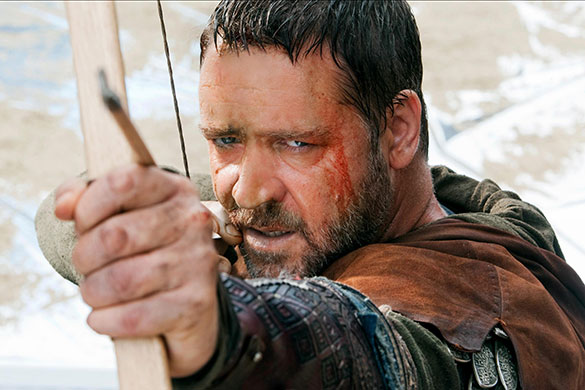
'Robin Hood was almost certainly a pedestrian," David Crook, the retired former assistant keeper of public records at the Public Record Office, tells me over tea one afternoon at his home in Grantham. Robin, in other words, had no horse. This is significant, because, as I settle down to try to unravel the eight centuries of myth and legend that have accreted around the outlaw, I am looking at a still from the new Ridley Scott movie, which will open the Cannes film festival on 12 May. Russell Crowe – looking the spit of Maximus, the hero of Gladiator, with cropped hair, bloodied cheek and an expression of furious determination – is astride a horse. The horse, naturally, is white: what else would a hero, about to save England from French invaders, ride? I fear there may be some historical disconnect here.
Scott has told Empire magazine that history is at the heart of his thinking. "It's always stronger if you do that . . . I always like to know where they're coming from." Scott's Robin has been fighting alongside King Richard (the Lionheart) in the Crusades – but the entire Crusades backstory that now dominates treatments of Robin was, in fact, established in the public imagination by Ridley's namesake, Sir Walter Scott, in his novel Ivanhoe (1820). It has given an essentially local tale – Robin's banditry somewhere in northern England – a context never intended in the 15th-century ballads on which the Robin Hood mythos is based.
The echo of Maximus is heard throughout the new film: wronged son returning to claim what is rightfully his and, in so doing, uphold the honour of the dead Good King Richard, oppose the depredations of Bad King John, beat off the French, and prepare the land for Magna Carta and a blissful future, winning the hand of Cate Blanchett's feisty Maid Marian into the bargain. It condenses 20 years of history (c 1199-1218) into a couple of hours, and puts Robin centre stage in a story in which he had no part at all.
Leon Unczur, the current sheriff of Nottingham, has a wonderfully medieval face. I meet him in a cold little room full of flags, called the south bastion, next to the gatehouse of Nottingham castle.
Did he really exist?, I ask Unczur. Plenty of people think Robin is a myth, beginning life as a woodland sprite somewhere in a lost pagan past. "Somebody existed," he says. "Some, several – it doesn't really matter. They existed and they exist now. It's like any yarn: it gets spun until you turn into Errol Flynn. Who was he? Was he anybody specific? It really doesn't matter because it's the stories that people relate to."
"And the values," chips in Stephen Barker, Nottingham city council's head of communications who is with us in the south bastion, "the environmentalism, the romance, the cunning. He's victorious by being smart."
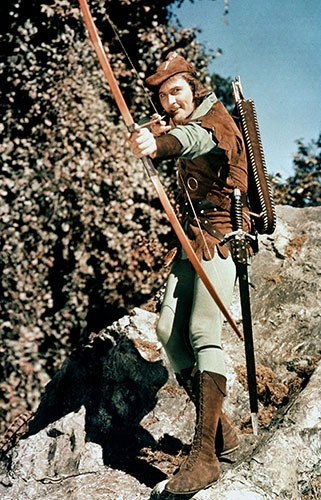
"The great thing about the Robin Hood legend is that, because it's so iconic, it has outgrown and overtaken all the issues which are unproven. People just like the principle of the story; what it stands for. It's like they say in the films of the 1940s: 'If the truth gets in the way, print the legend.'"This is not what I want to hear. I am looking for the prototype of Robin Hood, the origin of the stories that have spun out of control over the centuries.
Somewhere along the line, Robin came to be a righter of wrongs – which he isn't in the original 15th-century ballads – and White says that has added to the potency of the myth. "One of the pieces of research we did when we first formed the society was to get in touch with a cross section of people who were trading under the Robin Hood name. I approached them and said, 'Why do you call yourself the Robin Hood Laundromat in Florida?', and people came back and said, 'Because it has a credible ring. Our customers know we are a value-for-money operation.' Charities use the name for the same reason." When Richard Curtis and Bill Nighy spearheaded the recent campaign for a "Robin Hood tax" (a levy on international currency transactions), they were summoning up a long tradition.
Could it really all be based on nothing? I ask Lutton, with a hint of desperation. "There are literary-historical references in the late Middle Ages to a possible originating historical figure, and there are some things in central government records, references to an outlaw called Robert Hod. But by the 1260s these names, Hod and Robhod, are being used as popular monikers for outlaws."
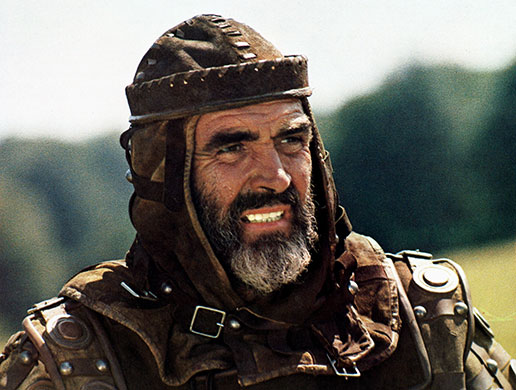
So the question is, was there an archetype for all these Hods, who started to appear right across England – in Yorkshire, Sussex and Cumbria, as well as Nottinghamshire? Lutton isn't sure. "Was there a model for this cultural diffusion, or have people heard the stories and looked for an originating figure because we all want to believe that this character may have existed?"
Andy Gaunt, an archaeologist with Nottingham county council, tells me not to think of medieval Sherwood as just a forest. It was a working community, governed by forest law (a draconian code introduced by William the Conqueror to protect his hunting land). The inhabitants of areas governed by forest law loathed it, and would have been likely to lionise anyone who flouted it. It is easy to see how outlaws became heroes, and common criminals could be confused with freedom fighters."People were being outlawed all the time," Gaunt says. "It was quite common in medieval times – it was a violent society. The forest was seen as a wild place and after dark it would be pitch black. I wouldn't want to go there on my own (though there are parts of Nottingham I wouldn't want to go on my own now). Robin Hood in the ballads is quite a brutal character, but people didn't seem to worry about that, just as people in the Wild West didn't worry that Billy the Kid was actually a serial murderer."
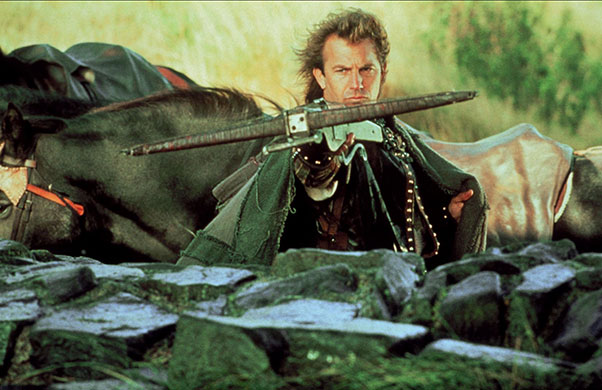
Stephen Knight, professor of English literature at Cardiff University and one of the world's leading authorities on the literary evolution of Robin Hood, calls the search for the real outlaw "vulgar empiricism". "When the Doncaster News rings up and says 'Did Robin Hood really exist?', I have a variety of answers," he tells me. "One is, 'How do I know you exist?' or 'What do you mean exist?' But I like to say, 'Of course he exists, we're talking about him.' My view is that the empirical, real Robin Hood – like the 'real' King Arthur – is a 20th-century take on reality. Who cares if there was a real Robin Hood? There's a real myth which is living and breathing."
I head for Wakefield, and a taxi driver takes me on to Robin Hood, less a village than an anonymous ribbon of houses equidistant between Wakefield and Leeds. "I don't think it's got anything to do with the real Robin Hood," he warns me, but by the end of the journey I have almost convinced him that this acme of anonymity has a deep historical significance. "People round here just aren't aware of their history," he admits.
Apart from gangs of marauding youths, some of whom are lighting fires in an alleyway – the tradition of outlawry persists! – there isn't much happening in Robin Hood when I get there. The woman in the post office also insists it's got nothing to do with Robin Hood; ditto the staff of the One-Stop convenience store and the man outside the Gardeners' Arms looks at me as if I may be mad. I have come all this way to be met by indifference.
I sit outside the Old Halfway House, a pub on the main road that marks the midpoint between Wakefield and Leeds. It appears to be closed – like so many pubs these days – and there are "To let" signs outside. The spirit of the Middle Ages seems very distant. Perhaps, after all, Robin Hood the archer never did walk this way.
Then a man emerges from the murky pub with a cigarette. It is open after all. I go inside for a shandy, and ask the woman behind the bar what the town's link is with the legendary outlaw. "Haven't a clue, I'm not from round here. Ask them, they're local," she says, pointing to four middle-aged men at the other end of the room, cradling pints and watching the racing on TV. She shouts across and puts the question for me.
"The original Robin Hood was from round here," says a burly man, the spit of Little John, who for a moment diverts his attention from the 4.20 at Aintree. "Nottingham just jumped on the bandwagon."
It may not be definitive proof, but I feel a surge of satisfaction at this small victory for vulgar empiricism, and head outside to catch the bus to Leeds.
Or the Great Recession's.....
My search for the real Robin Hood
Ridley Scott claims his new film starring Russell Crowe will be the most historically accurate ever. But what do we actually know about the real outlaw and his merrie men?

'Robin Hood was almost certainly a pedestrian," David Crook, the retired former assistant keeper of public records at the Public Record Office, tells me over tea one afternoon at his home in Grantham. Robin, in other words, had no horse. This is significant, because, as I settle down to try to unravel the eight centuries of myth and legend that have accreted around the outlaw, I am looking at a still from the new Ridley Scott movie, which will open the Cannes film festival on 12 May. Russell Crowe – looking the spit of Maximus, the hero of Gladiator, with cropped hair, bloodied cheek and an expression of furious determination – is astride a horse. The horse, naturally, is white: what else would a hero, about to save England from French invaders, ride? I fear there may be some historical disconnect here.
Scott has told Empire magazine that history is at the heart of his thinking. "It's always stronger if you do that . . . I always like to know where they're coming from." Scott's Robin has been fighting alongside King Richard (the Lionheart) in the Crusades – but the entire Crusades backstory that now dominates treatments of Robin was, in fact, established in the public imagination by Ridley's namesake, Sir Walter Scott, in his novel Ivanhoe (1820). It has given an essentially local tale – Robin's banditry somewhere in northern England – a context never intended in the 15th-century ballads on which the Robin Hood mythos is based.
The echo of Maximus is heard throughout the new film: wronged son returning to claim what is rightfully his and, in so doing, uphold the honour of the dead Good King Richard, oppose the depredations of Bad King John, beat off the French, and prepare the land for Magna Carta and a blissful future, winning the hand of Cate Blanchett's feisty Maid Marian into the bargain. It condenses 20 years of history (c 1199-1218) into a couple of hours, and puts Robin centre stage in a story in which he had no part at all.
Leon Unczur, the current sheriff of Nottingham, has a wonderfully medieval face. I meet him in a cold little room full of flags, called the south bastion, next to the gatehouse of Nottingham castle.
Did he really exist?, I ask Unczur. Plenty of people think Robin is a myth, beginning life as a woodland sprite somewhere in a lost pagan past. "Somebody existed," he says. "Some, several – it doesn't really matter. They existed and they exist now. It's like any yarn: it gets spun until you turn into Errol Flynn. Who was he? Was he anybody specific? It really doesn't matter because it's the stories that people relate to."
"And the values," chips in Stephen Barker, Nottingham city council's head of communications who is with us in the south bastion, "the environmentalism, the romance, the cunning. He's victorious by being smart."

"The great thing about the Robin Hood legend is that, because it's so iconic, it has outgrown and overtaken all the issues which are unproven. People just like the principle of the story; what it stands for. It's like they say in the films of the 1940s: 'If the truth gets in the way, print the legend.'"This is not what I want to hear. I am looking for the prototype of Robin Hood, the origin of the stories that have spun out of control over the centuries.
Somewhere along the line, Robin came to be a righter of wrongs – which he isn't in the original 15th-century ballads – and White says that has added to the potency of the myth. "One of the pieces of research we did when we first formed the society was to get in touch with a cross section of people who were trading under the Robin Hood name. I approached them and said, 'Why do you call yourself the Robin Hood Laundromat in Florida?', and people came back and said, 'Because it has a credible ring. Our customers know we are a value-for-money operation.' Charities use the name for the same reason." When Richard Curtis and Bill Nighy spearheaded the recent campaign for a "Robin Hood tax" (a levy on international currency transactions), they were summoning up a long tradition.
Could it really all be based on nothing? I ask Lutton, with a hint of desperation. "There are literary-historical references in the late Middle Ages to a possible originating historical figure, and there are some things in central government records, references to an outlaw called Robert Hod. But by the 1260s these names, Hod and Robhod, are being used as popular monikers for outlaws."

So the question is, was there an archetype for all these Hods, who started to appear right across England – in Yorkshire, Sussex and Cumbria, as well as Nottinghamshire? Lutton isn't sure. "Was there a model for this cultural diffusion, or have people heard the stories and looked for an originating figure because we all want to believe that this character may have existed?"
Andy Gaunt, an archaeologist with Nottingham county council, tells me not to think of medieval Sherwood as just a forest. It was a working community, governed by forest law (a draconian code introduced by William the Conqueror to protect his hunting land). The inhabitants of areas governed by forest law loathed it, and would have been likely to lionise anyone who flouted it. It is easy to see how outlaws became heroes, and common criminals could be confused with freedom fighters."People were being outlawed all the time," Gaunt says. "It was quite common in medieval times – it was a violent society. The forest was seen as a wild place and after dark it would be pitch black. I wouldn't want to go there on my own (though there are parts of Nottingham I wouldn't want to go on my own now). Robin Hood in the ballads is quite a brutal character, but people didn't seem to worry about that, just as people in the Wild West didn't worry that Billy the Kid was actually a serial murderer."

Stephen Knight, professor of English literature at Cardiff University and one of the world's leading authorities on the literary evolution of Robin Hood, calls the search for the real outlaw "vulgar empiricism". "When the Doncaster News rings up and says 'Did Robin Hood really exist?', I have a variety of answers," he tells me. "One is, 'How do I know you exist?' or 'What do you mean exist?' But I like to say, 'Of course he exists, we're talking about him.' My view is that the empirical, real Robin Hood – like the 'real' King Arthur – is a 20th-century take on reality. Who cares if there was a real Robin Hood? There's a real myth which is living and breathing."
I head for Wakefield, and a taxi driver takes me on to Robin Hood, less a village than an anonymous ribbon of houses equidistant between Wakefield and Leeds. "I don't think it's got anything to do with the real Robin Hood," he warns me, but by the end of the journey I have almost convinced him that this acme of anonymity has a deep historical significance. "People round here just aren't aware of their history," he admits.
Apart from gangs of marauding youths, some of whom are lighting fires in an alleyway – the tradition of outlawry persists! – there isn't much happening in Robin Hood when I get there. The woman in the post office also insists it's got nothing to do with Robin Hood; ditto the staff of the One-Stop convenience store and the man outside the Gardeners' Arms looks at me as if I may be mad. I have come all this way to be met by indifference.
I sit outside the Old Halfway House, a pub on the main road that marks the midpoint between Wakefield and Leeds. It appears to be closed – like so many pubs these days – and there are "To let" signs outside. The spirit of the Middle Ages seems very distant. Perhaps, after all, Robin Hood the archer never did walk this way.
Then a man emerges from the murky pub with a cigarette. It is open after all. I go inside for a shandy, and ask the woman behind the bar what the town's link is with the legendary outlaw. "Haven't a clue, I'm not from round here. Ask them, they're local," she says, pointing to four middle-aged men at the other end of the room, cradling pints and watching the racing on TV. She shouts across and puts the question for me.
"The original Robin Hood was from round here," says a burly man, the spit of Little John, who for a moment diverts his attention from the 4.20 at Aintree. "Nottingham just jumped on the bandwagon."
It may not be definitive proof, but I feel a surge of satisfaction at this small victory for vulgar empiricism, and head outside to catch the bus to Leeds.
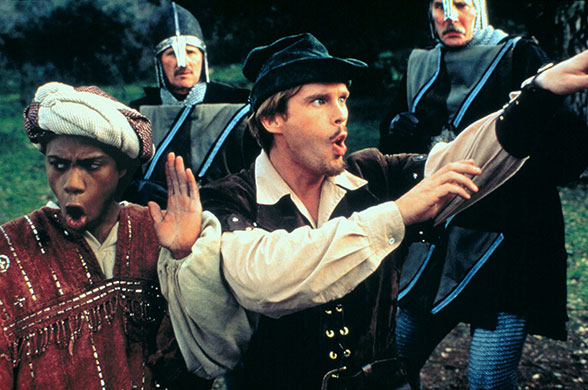
Comment